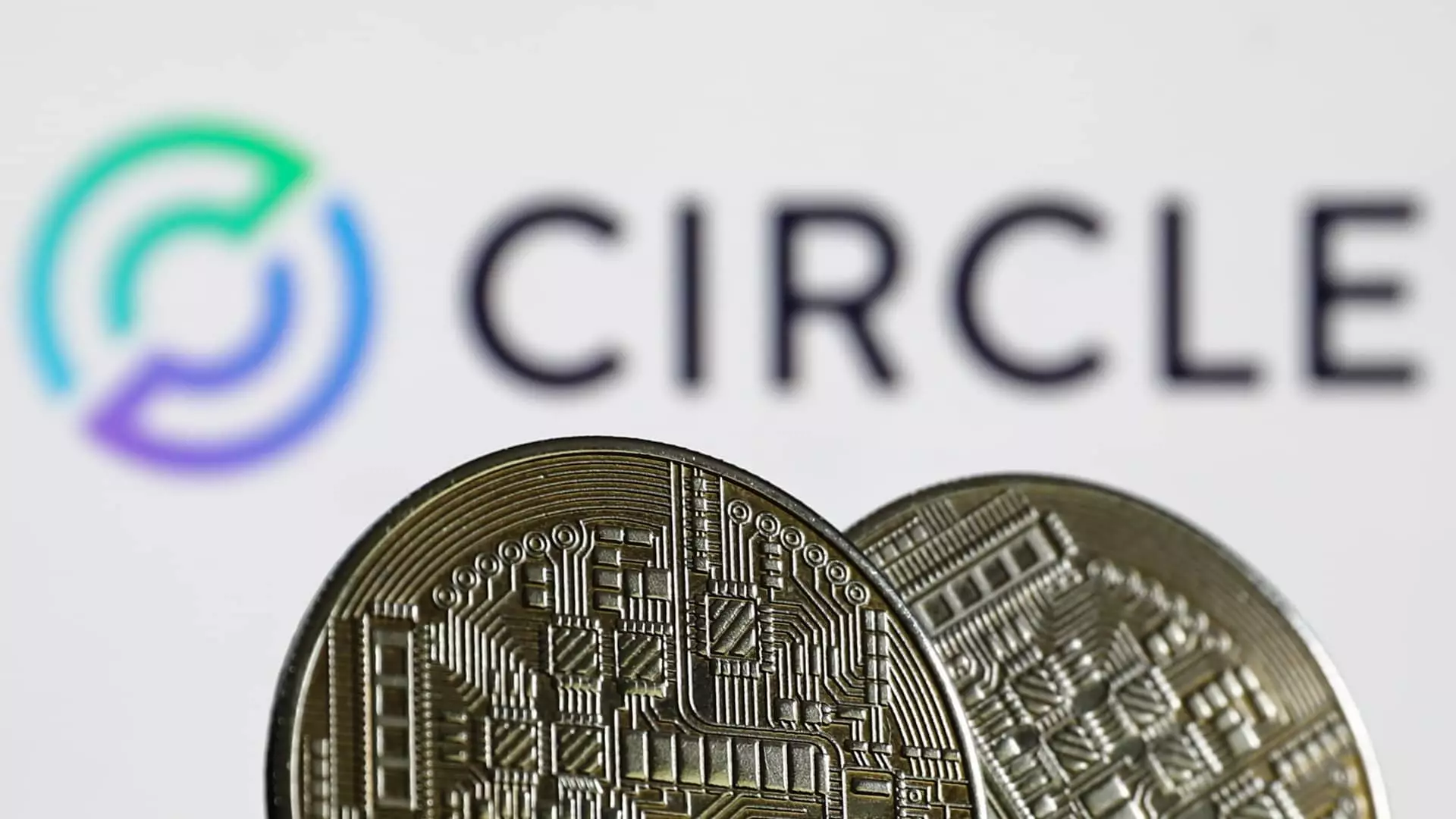Circle, the architect behind the widely-used USDC stablecoin, has embarked on a thrilling journey towards its initial public offering (IPO), aiming to raise an impressive $624 million at an anticipated valuation of around $6 billion. This ambitious financial maneuver represents more than just a chance for the company to solidify its standing in the cryptocurrency landscape; it signifies a broader maturation of the crypto market itself, as mainstream financial practices intermingle with the libertarian ideals that underpin many blockchain projects. However, one cannot help but question the motivations behind this IPO and its implications for the rapidly shifting financial terrain.
It is important to understand that Circle is not merely entering a market; it is placing a bet on the future of stablecoins and the overall legitimacy of cryptocurrencies. With the equity market offering a more conventional path to growth, one must scrutinize what nimbler, decentralized systems may fundamentally shift under the pressure of regulatory scrutiny and traditional business practices. Circle’s move could be construed as a desperate attempt to remain relevant in a rapidly evolving ecosystem, even as Congress inches closer to establishing a regulatory framework for digital assets.
The Numbers Don’t Lie—but They Don’t Tell the Whole Story
On paper, Circle’s plans appear sound. The company will release 24 million shares of its Class A common stock, with a selling range of $24 to $26 each. Interestingly, this projected valuation comes at a time when Circle’s USD Coin has taken significant strides, swelling to roughly $62 billion in circulation and commanding 27% of the total market cap of stablecoins. When we consider that Tether still reigns supreme, controlling a remarkable 67% share, the stakes are undoubtedly high.
However, a deeper analysis reveals an unsettling truth: despite the growth in USDC’s market cap—which outpaced Tether’s expansion this year—there lies an inherent volatility within the crypto realm. Circle’s valuation is predicated on market sentiments that can waver dramatically, shaping not just investor confidence but also the structural stability of the financial instruments that rely on stablecoins for liquidity. Can Circle maintain its ambitious trajectory amidst turbulence when several factors threaten to disrupt the crypto ecosystem?
The Underlying Gamble: Power Moves in a Political Landscape
What’s even more fascinating is how this IPO unfolds against a backdrop of legislative maneuvering. The recent advancement of crypto regulations in the Senate represents a potential turning point, with politicians considering frameworks that could either empower or constrain the burgeoning crypto economy. Trump’s eagerness to place crypto regulations on his desk before Congress’s recess showcases just how pivotal a time we are in—a political game where the stakes are significantly higher than mere financial solvency.
If Circle is successful, it could not only reshape its own destiny but that of Coinbase as well, given their intertwined financial relationship. Coinbase’s revenue-sharing arrangements with Circle indicate a reliance on the stablecoin’s success, implying that any missteps could reverberate throughout their ecosystem. The vision of making USDC the world’s leading stablecoin, as mentioned by Coinbase’s CEO, places enormous pressure on both entities.
A Vision or a Mirage? The Future of Stablecoins
The narrative surrounding stablecoins has shifted from being a niche service for trading and collateral in decentralized finance (DeFi) to a mainstream vehicle for swiftly transferring value globally. Banks and fintech companies are increasingly exploring stablecoins’ potential to facilitate rapid, low-cost transactions. Yet, one must question whether Circle’s vision aligns with an ever-changing market where utility can swiftly pivot based on regulatory, economic, or technological factors.
Moreover, the undercurrent of maintaining U.S. dollar dominance through stablecoins cannot be ignored. As lawmakers increasingly express concerns about the impact of cryptocurrencies on national economic interests, Circle’s pledge to ensure dollar utility could veer perilously close to entrenching power rather than democratizing finance. In a landscape where hopes of decentralization clash with traditional fiscal mechanics, how will this IPO impact the balance of power?
Circle’s IPO is not just a financial endeavor; it’s a declaration of intent, challenging established norms while also risking the very fabric of an emerging industry. The venture carries with it a potent cocktail of aspiration and peril, leaving us to wonder if this bold gamble will indeed lead to a new era of financial liberation or throw us into further chaos.


Leave a Reply